TQM, or total quality management is an essential approach for improving both the processes required and the quality of your products for long-term success. While its origin lies in the manufacturing industry, the principles and practices are applicable to any industry, even in 2022.
In this guide, we’ll do a deep dive into what TQM requires, its principles, benefits, and how you can apply this management system to your business processes.
What is TQM (total quality management)?
Total quality management, or TQM, is a management approach designed to help companies create an environment of continuous improvement, consistently delivering high-quality work that delights customers.
For example, a manufacturing company creates a large volume of products. By speeding up production, sourcing cheaper materials, or improving efficiency in other ways, you can reduce running costs. The company can then pass on these savings to the customer at a lower price.
Even with carefully designed processes, there’s typically a lot of room for improvement. People tend to settle for the status quo, and TQM encourages them to work against this.
What are the 8 principles of TQM?
The principles of customer focus and continuous improvement are the foundation of total quality management. There are eight principles that contribute to this.
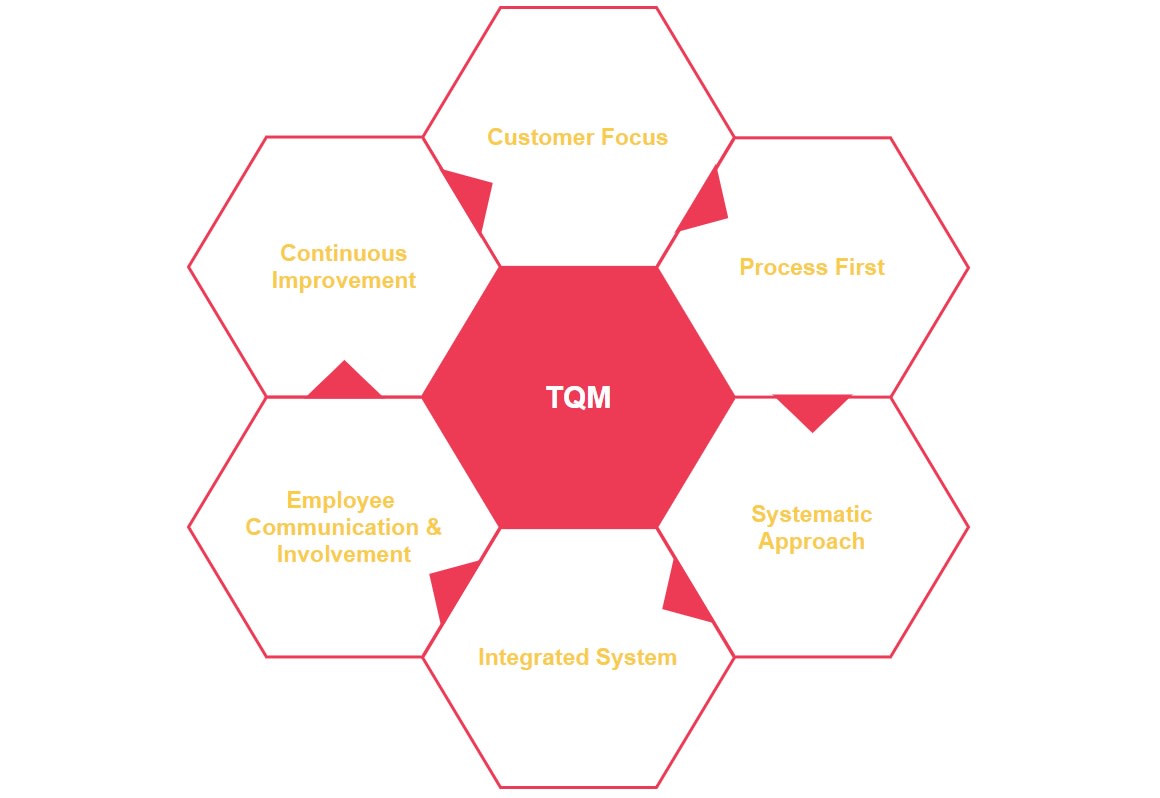
Let’s take a closer look.
- Customer focus: Every action comes from a drive to deliver more value to the customer.
- Total employee involvement: Include all staff, not just managers, in ideation and decision-making. After all, executives don’t have a monopoly on good ideas.
- Process-centered: Standardizing workflows into processes reduces the chance of human error. It also boosts efficiency and helps teams deliver products faster.
- Integrated system: Create an infrastructure that encourages company-wide collaboration with a strong, shared corporate mission, values, and culture.
- Strategic and systematic approach: The primary tenet of TQM is to make strategic choices to improve your company as a whole rather than only specific issues. For example, don’t just replace underperforming employees, explore why they underperformed in the first place to better understand if there is room for improvement in hiring, onboarding, or effective training practices instead.
- Continual improvement: Rather than going for a single big project, focus on implementing small changes. Improving customer satisfaction or core processes is a long-term game.
- Fact-based decision-making: A culture of data and analysis means fewer emotion-fueled mistakes. Set KPIs and invest in tracking and analytics to monitor them. Intuition will always have a place in business, but you should back it up with data.
- Clear communication: Everyone in your company should be on the same page. You need to standardize your vision, processes, and plans. To make things easier, use a reliable platform for all communication.
Many of these principles probably sounded familiar if you’ve read about Lean manufacturing philosophies.
What are the building blocks of total quality management?
The main building blocks of TQM are culture, analytics, a systemic approach, and long-term investment.
You can’t implement any of the TQM principles without mastering these business areas:
- Culture: The idea that every employee is responsible for driving change in the company requires an organizational culture that supports it at all levels. Without all staff on board, any quality improvement will be temporary.
- Measurement and analytics: If you don’t have the data, you can never know if you improved or not. That’s why you must adopt a mindset of tracking everything efficiently and consistently.
- Systemic outlook: Don’t treat just the symptoms, seek out the root of issues and address those.
- Long-term investment: Investment decisions should be made with long-term achievements in mind. While overhauling your hiring and training process might seem daunting, such changes will pay for themselves in the future.
Industries using total quality management
TQM started out in manufacturing in smaller companies and as an idea on campuses before engineer and consultant W. Edwards Deming brought it to Japan. As a result, many Japanese and international manufacturing companies adopted it, as well as Toyota and Phillips.
Today it’s spread to a variety of industries beyond just manufacturing and technology, like:
- Healthcare
- Food production
- Field service
If your company has repeatable processes that can benefit from improvement, TQM can help you.
Why is total quality management important to an organization?
The primary purpose of TQM is to improve and ensure the quality of every product or service your company delivers so you can avoid costly mistakes and product recall. To put it in perspective, check out these statistics:
- A single product recall in the food industry costs $10 million, on average.
- Medical errors cost an estimated $20 billion per year in the United States alone in settlement costs and legal expenses.
Even if you don’t sell products with a high potential risk of recall or damages, you’re not safe. Every company that handles some level of customer data faces cybersecurity risks, according to PWC research.
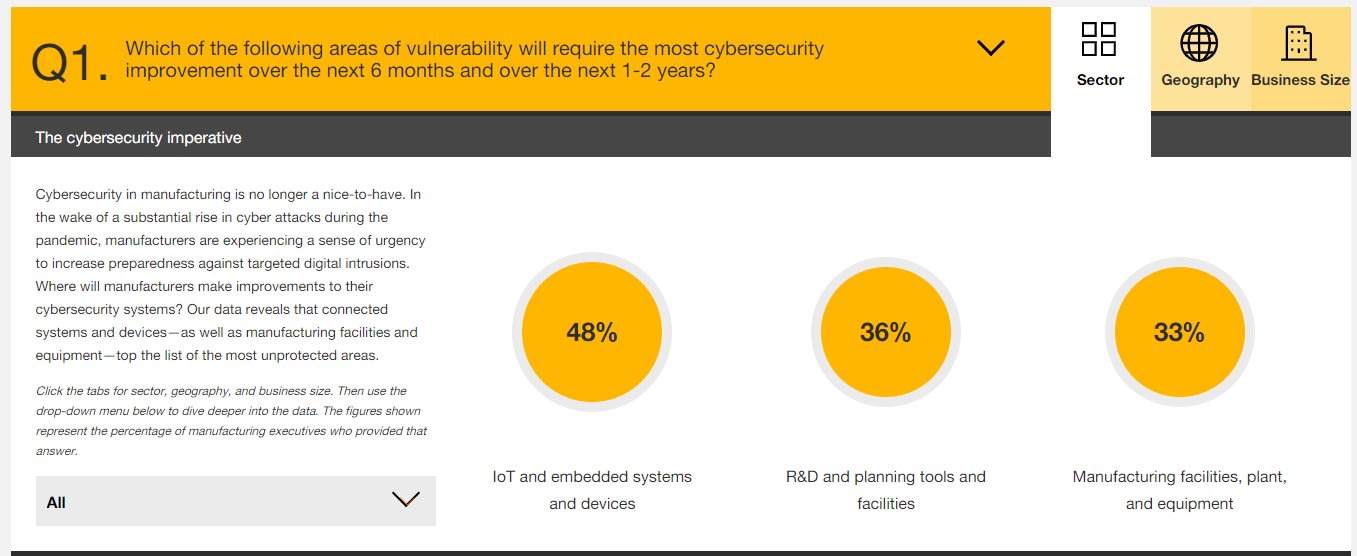
Thankfully, with the right processes in place, you can avoid potential issues.
TQM ensures your entire organization keeps what really matters in focus — product quality and the customer experience. It helps you avoid quality problems and build healthy long-term relationships with your clients.TQM vs. Kaizen vs. Six Sigma: what’s the difference?
TQM, Kaizen, and Six Sigma are all unique management approaches that have a shared focus on processes rather than projects and value continuous improvement— let’s examine where they differ.
Six Sigma
Six Sigma focuses almost exclusively on the number of defects per million and reducing them. The percentile success rate is the north star. It lays out a concrete framework for finding production problems.
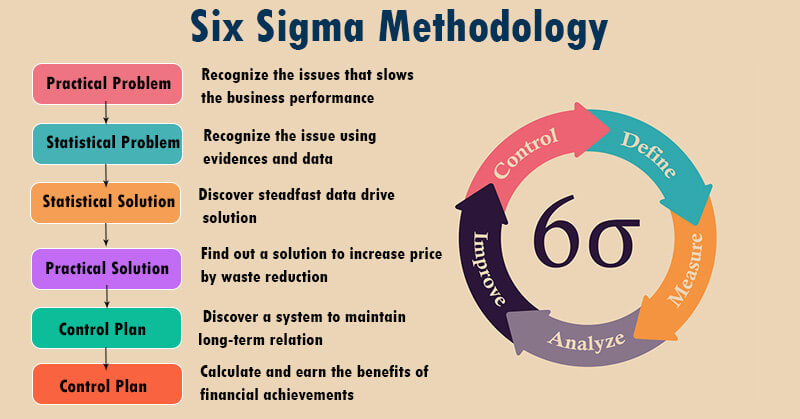
First, you must recognize that the issue exists. Your managers may have an idea that production is too slow. Next, you prove that the problem exists using measurement and data. Then you figure out the solution by running different numbers and using that to find a practical approach.
Kaizen
The Kaizen approach has more in common with TQM as it also aims to improve the work environment as a whole, rather than honing in on defects. Neither Kaizen nor TQM limits itself to fixing mistakes in the production line. The difference is that Kaizen focuses on bottom-up culture-based changes.
TQM
TQM is almost more of a cultural initiative than a management framework with concrete steps. You can see that in the high-level principles like fact-based decision-making where you involve every employee. Where it differs from Kaizen is the focus on high-level management involvement for decisions like standardizing frameworks and tools throughout the company.
How to implement total quality management in different areas
Let’s explore how you can use TQM to boost your business performance in different areas.
Supply chain management
If you deal in physical products, your supply chain plays a critical role in your business. If it’s inefficient, your customers end up paying more for a product that takes longer to deliver. There’s also a risk of significant delays or product callbacks if your suppliers are sloppy.
On the other hand, if you do it right, you’ve secured a significant part of a good customer relationship.
Use the TQM methodology to optimize the entire process, step-by-step.
- Track metrics like delivery time, % of delays, and production errors
- Use the data to identify potential issues and bottlenecks
- Ideate solutions with your team
- Continually compare to other vendors on price and performance
- Focus on steadily improving your production speed and optimizing each stage
Employee onboarding and training
Most businesses undervalue employee onboarding and training because they fail to understand how short-term upskilling and reskilling training boosts productivity and even contributes to company growth.
Just look at these numbers from a recent TalentLMS study:
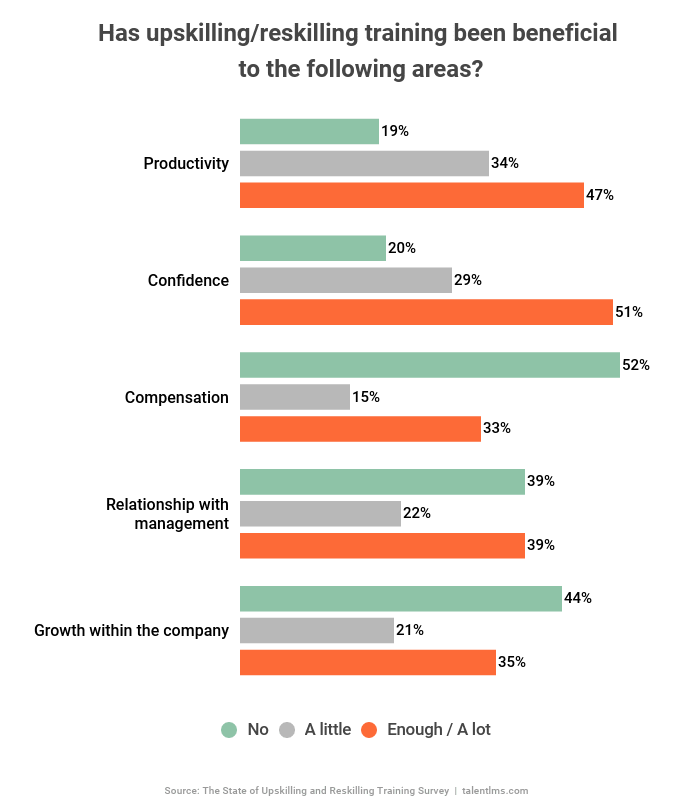
Plus, a good employee onboarding program can help you retain more employees. To put your TQM in place, again, you need to start by figuring out the data.
- Create KPIs for measuring new employee performance and engagement.
- Adopt digital tools, like learning platforms or CRMs.
- Test onboarding and training programs against each other.
Using digital tools for learning, work, and the onboarding process can help you measure performance and progress.
Customer service
Customer service is a fundamental aspect of business performance. But don’t think that TQM mandates cutting costs here. Quality management means seeing past cheap shortcuts to the real goldmine. Next-level service means happy, loyal customers.
Again, implementing TQM follows a similar process.
- Measure key service metrics like first response time and average resolution time.
- Use post-experience surveys to track customer satisfaction.
- Integrate multiple channels to standardize the experience.
- Ideate and test potential solutions over time.
Smoother implementation with the right TQM tool
If you only focus on the high-level TQM philosophy, you won’t be able to make the change stick. You need to use practical tools and frameworks to help your teams transition.
- PDCA cycle: the plan, do, check, act cycle is an invaluable tool for fast progress. Don’t pretend you can create the perfect plan of attack before starting. Use the data from your first attempt to gradually dial it in. That’s the whole idea behind continual improvement.
- Data visualization: what good is data if you can’t make sense of it? Not at all is the answer. So use visualization tools to highlight key metrics and help you find insights.
- Kanban boards: while technically a part of Lean, many TQM followers also implement Kanban to some extent.
Make a smooth transition to total quality management with monday.com
If you want a successful implementation of TQM, you need to start with a foundation that supports a system of managing processes without spreadsheets and endless email threads. You can use monday.com to give your employees a robust digital workspace that includes 40+ integrations, customizable templates, and a REST API to create the exact platform your teams need.
Standardize workflows with clear templates and checklists
Start by documenting and standardizing different workflows. It’s a good first step towards a more reliable process. It also makes onboarding new employees a lot easier. monday.com offers a wide range of workflow templates aimed at different companies. For example, the template for design teams looks like this:
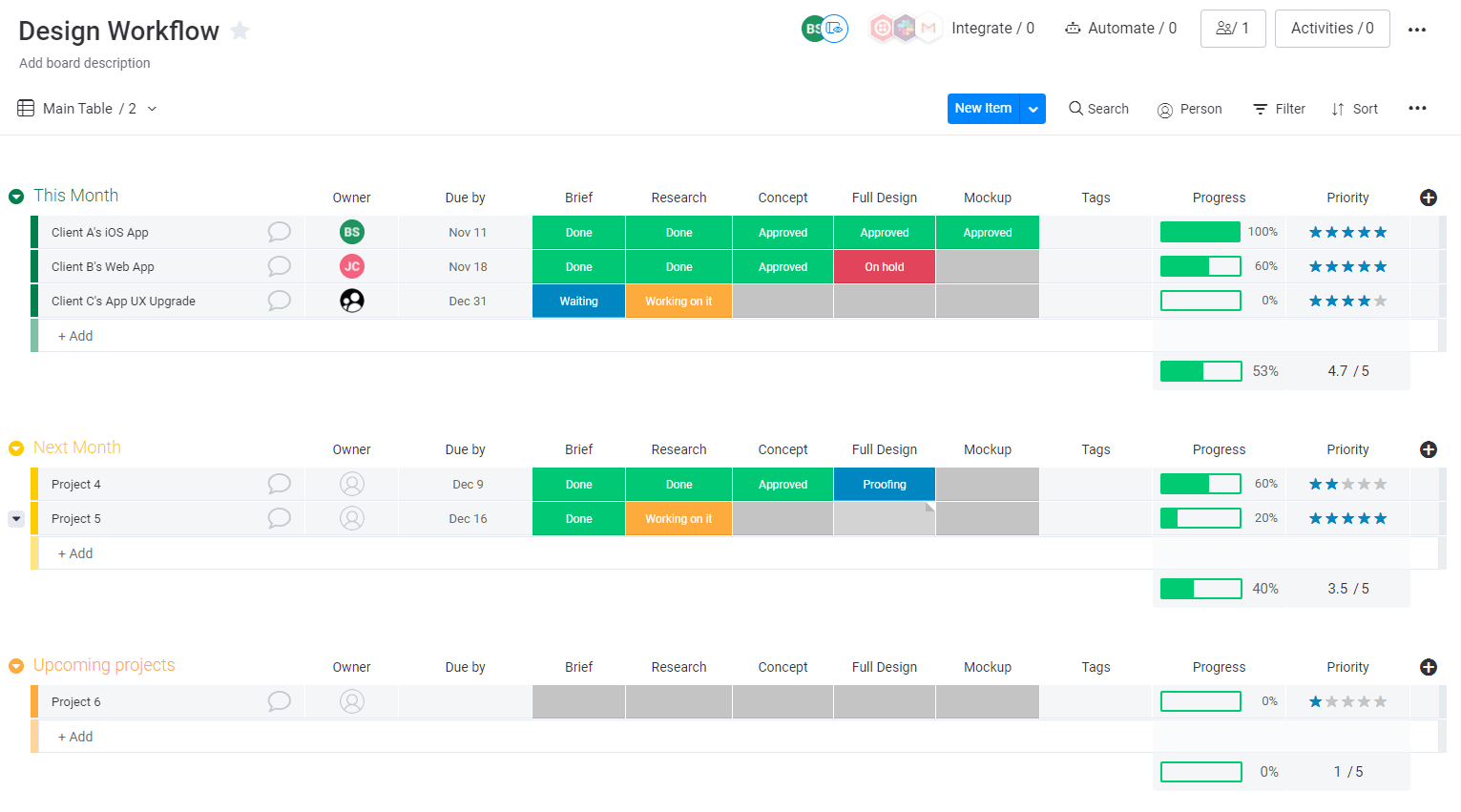
You can easily add sub-items or comment in a checklist to each item. With access and user permission control, you can ensure that every employee only sees what they need to. No searching through endless email threads required.
Track and measure progress and unexpected results in different processes.
From the second your first boards are up and running, you’ll get access to real-time data. With handy visualization tools like Gantt charts, you’ll never lose track of a process again.

You can also visualize the progress of multiple processes in a single dashboard. Note that all this data is only up-to-date when all your team members actively use the platform. Promoting that must be a part of the cultural change of your TQM effort.
Remove data silos between departments and teams with integrations.
In 2022, every team and department has their own suite of SaaS tools that they rely on, but usually, no single enterprise tool can effectively complete every possible task. monday.com acts as a central hub for all your company’s various apps.
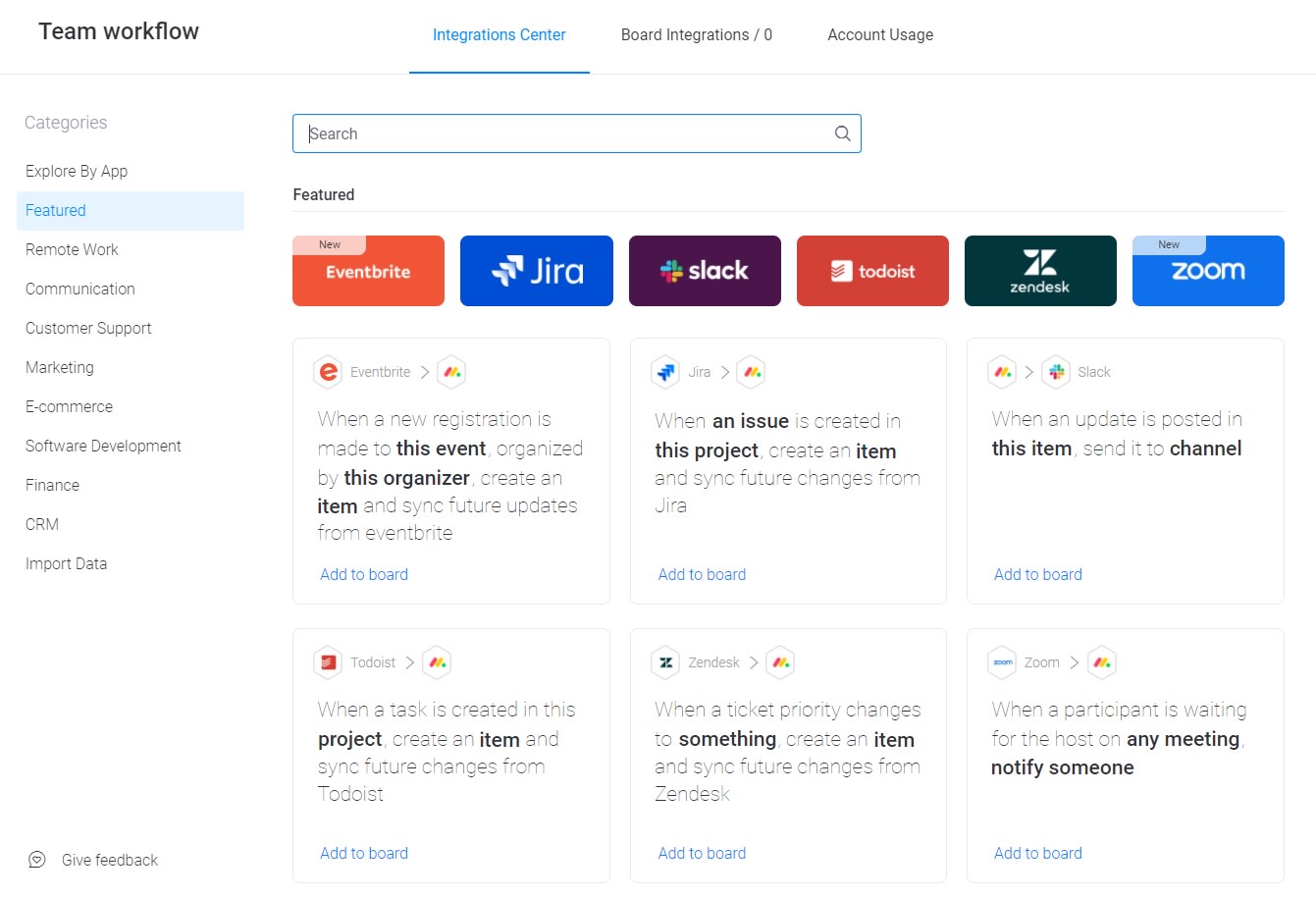
In a single move, you can delete the evil known as “manual data entry” from your company. Not only does this free up valuable employee time, but it also removes the risk of bad data due to typos.
Monitor real-time bug and issue reports.
You can also use these sources to monitor reliable bug and issue reports.
![]()
With digital products, bugs are the equivalent of a production error. Striving to minimize them is the bare minimum of TQM.
Centralize your TQM with monday.com
Total quality management doesn’t just focus on the final result. It also considers your whole working environment and minimizes excess costs and risks. If you try to take any shortcuts, you might see temporary, localized gains, but you won’t see stable improvements throughout your entire company.
Use a ready-made workflow template for your industry’s TQM, like this manufacturing template, to get started today.

